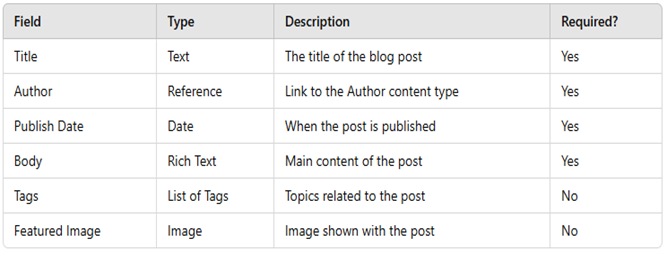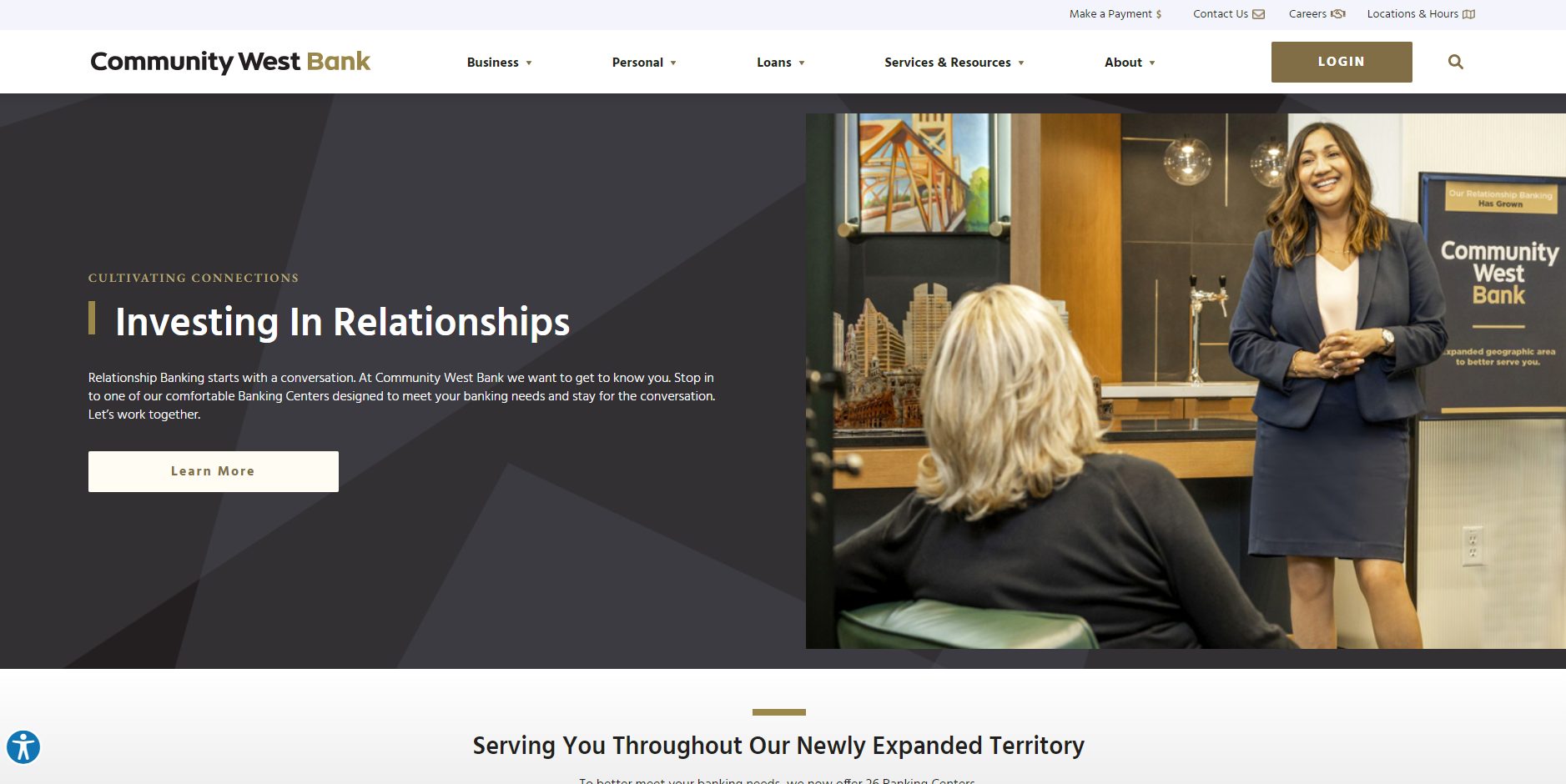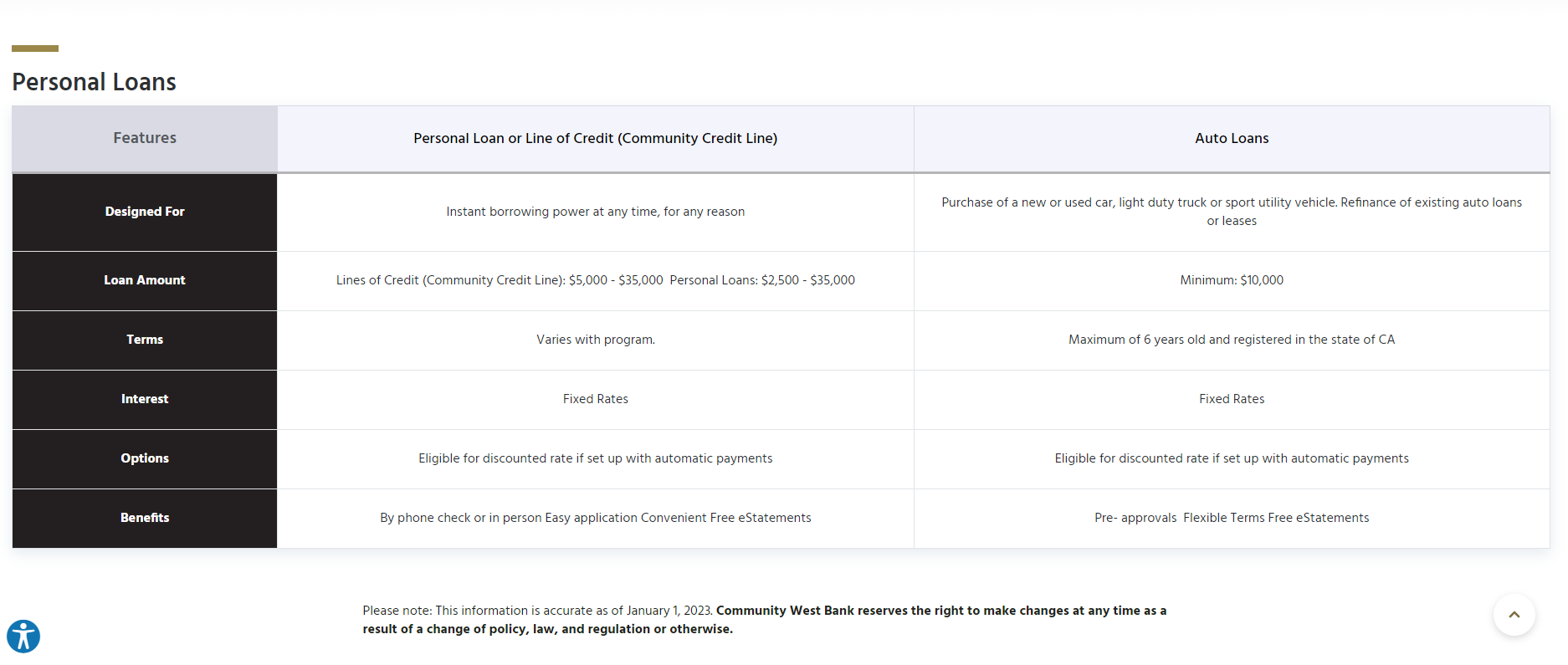Community West Bank
Services we provide:
- Discovery
- Strategy
- UX/UI design
- Website development
- Xperience by Kentico implementation
About Community West Bank
CWB is a large community bank in southern California with over 20+ locations and a track record of financial strength, security and stability gained over its 44 years in business. CWB has set itself apart from other banks by its people, dedication to client advocacy, exemplary "relationship banking," strong community support and a mission to exceed expectations. With a passion for providing customized solutions, the merger drove the decision to revamp their digital services to better serve their customers.
The Process
In an era where digital presence is critical to financial institutions and mergers are frequent, the successful merger of Community West Bank (CWB) and Central Valley Bank (CVB) depended on a robust and well-executed digital strategy, critical to providing a seamless user experience for customers and employees. SilverTech, leveraging its expertise in Xperience by Kentico website development, customized a digital solution that unified the brands of these two banks into one cohesive user-friendly digital experience in just 4 months from start to launch.
The Challenges
The merger of CWB and CVB presented unique challenges, particularly in integrating two distinct digital landscapes into a single cohesive website. The biggest challenges included:
- Differing Content Strategies: CWB's site was optimized for SEO with a rich content library, while CVB's site focused more on detailed product pages. Balancing these different content approaches was crucial.
- Short Timeline: The project needed to be completed with a demanding timeline, delivering a high-quality, functional website, from planning to launch in less than four months.
- Outdated Technology: The old CWB site suffered from poor mobile optimization, slow speeds, outdated information, and a lack of interactive features. This hindered customer engagement and usability.
Goals for New Site
SilverTech identified four main goals for CWB's new website with the main goal of unifying the brands. The merger of the two banks presented a unique opportunity to take advantage of the best from both brands.
Solution and Implementation
Based on the insight gained, SilverTech devised a comprehensive strategy roadmap to address the challenges and deliver a seamless digital experience for the bank merger. It was SilverTech's recommendation that Kentico's newest hybrid CMS platform Xperience by Kentico would be the best solution for the new website. Xperience with robust features and functionality allowed SilverTech to create an exceptional digital user experience efficiently for CWB.
The Key components of the solution include:
- Unified Content Strategy: SilverTech developed a content migration plan that combined the SEO-rich content from CWB with the detailed product information from CVB. This approach ensured that the new site would benefit from both banks' strengths while avoiding duplication and inconsistencies.
- Modern Design and Functionality: The new website was built with Xperience by Kentico, featuring a modern, responsive design to enhance user experience across all devices. Key features included:
- Enhanced Interactivity: Interactive elements and engaging content to improve customer interaction and retention
- Improved CTAs: Clear, strategically placed CTAs to guide users through the site effectively
- Technical Upgrades: Faster loading speeds, improved reliability, and mobile optimization to ensure a smooth user experience
- New Functionalities: Inclusion of essential tools like product comparison tools, branch locator and more
- Accelerated Development Timeline: Despite the tight timeline, SilverTech employed agile development practices to ensure timely delivery without compromising quality. The team worked in sprints to continuously test and refine the site, leading up to a successful launch within the four-month timeframe.
HIGHLIGHTS
What is Content Modeling? A Guide to Structuring Content for Success
5/23/25
Content is everywhere — websites, apps, marketing campaigns, chatbots, and more. Behind every piece of content that looks clean and well-organized is an intentional content model guiding how that content is created, stored, and displayed. Whether you are a developer, designer, marketer, or content strategist, understanding content modeling is essential to building scalable and effective digital experiences.
What is Content Modeling?
Content modeling is the process of identifying, organizing, and structuring all the distinct types of content an organization needs — and defining how these pieces relate to one another. Think of it as creating a blueprint for your content, much like an architect creates a blueprint for a building.
A content model breaks content down into content types, fields, relationships, and rules, ensuring that content is reusable, adaptable, and easy to manage across multiple platforms and channels.
Why is Content Modeling Important?
Without a clear content model, content can become fragmented, inconsistent, and difficult to manage. Here’s why content modeling should be a cornerstone of your content strategy:
• Consistency: Ensures that content is structured uniformly across all platforms.
• Scalability: Makes it easier to add new content types or adapt to new channels without starting from scratch.
• Reusability: Allows content to be repurposed for different contexts (e.g., websites, apps, voice assistants).
• Collaboration: Helps designers, developers, and writers work from the same content blueprint, reducing confusion and errors.
• Future-proof: Prepares your content to be flexible and ready for future technologies and platforms.
Key Elements of a Content Model
1. Content Types
These are the different kinds of content you need, such as "Blog Post," "Product," "Testimonial," "Event," or "Author."
2. Fields/Attributes
Each content type has specific pieces of information (fields) associated with it.
• For a Blog Post, fields might include Title, Author, Publish Date, Body, Tags, and Featured Image.
• For a Product, fields might include Name, Description, Price, SKU, and Image.
3. Relationships
Content types often relate to each other.
• A Blog Post might have a relationship with an Author.
• A Product might be linked to multiple Categories.
4. Content Rules
These are constraints and guidelines that ensure content is created correctly.
• Example: "The Title field is required and has a 60-character limit."
• Example: "An Event must have a Date and Location."
5. Taxonomies and Tags
To classify and group content logically, you may define categories, tags, or custom taxonomies (e.g., genres for books).
A Simple Example: Modeling a Blog Post

How content Modeling Helps Teams
• Content Strategists: Plan and organize content in ways that align with business goals.
• Designers: Know exactly what content elements are available to design for.
• Developers: Can build flexible and efficient content structures in CMS or headless CMS systems.
• Marketing Teams: Ensure consistent messaging and design across campaigns.
Content Modeling in a Headless CMS World
With the rise of headless CMS platforms like Sanity and Contentful and hybrid headless CMS platforms like Kentico and Progress Sitefinity, content modeling has become even more critical. Since content is decoupled from presentation, having a solid model allows you to reuse the same content across websites, mobile apps, and even IoT devices without reauthoring content.
Tips for Effective Content Modeling
• Start with a Content Inventory: Identify all content types and their variations.
• Think About Relationships: Map out how content pieces connect.
• Consider Reusability: Design models that allow content to be reused in multiple contexts.
• Involve Stakeholders Early: Collaborate with developers, designers, and marketers to ensure the model works for everyone.
• Document Everything: Create clear documentation so everyone understands the content structure.
A Complex Example: Website Content Model
A complex content model for a website ensures structured content management, facilitating scalability, personalization, and multi-channel publishing.
[Home Page] ---> [Services] ---> [Case Studies]
| | |
V V V
[About Page] <--> [Team] [Testimonials]
|
V
[Contact Page]
Services Example
• GET /services – Get all services
• GET /services/{id} – Get a specific service
• POST /services – Create a new service
• PUT /services/{id} – Update a service
• DELETE /services/{id} – Delete a service
"id": 1,
"name": "Web Development",
"description": "Custom website development services.",
"category": "Development",
"icon": "https://cdn.yourbusiness.com/icons/web-dev.png",
"pricing": "Contact for Pricing",
"related_services": [2, 3]
Final Thoughts
Unlock the full potential of your digital ecosystem with SilverTech’s Content Modeling Solutions. Content modeling is more than just a technical task — it is a collaborative effort that ensures your content is consistent, flexible, and ready to meet user needs. Whether you’re managing a dynamic website, powering omnichannel marketing, or streamlining content governance, our expertly crafted models bring order to complexity.
A strong content model will set you up for success. We design flexible, future-proof structures that empower teams to create, manage, and distribute content seamlessly—reducing redundancies, improving searchability, and accelerating time-to-market. With SilverTech, your content isn’t just organized, it’s optimized for engagement, innovation, and business growth.
Ready to create a content model? Don’t delay! Get in touch to discover how SilverTech’s content modeling solution can make it happen.




